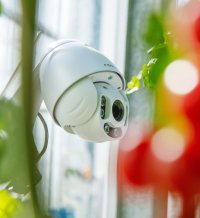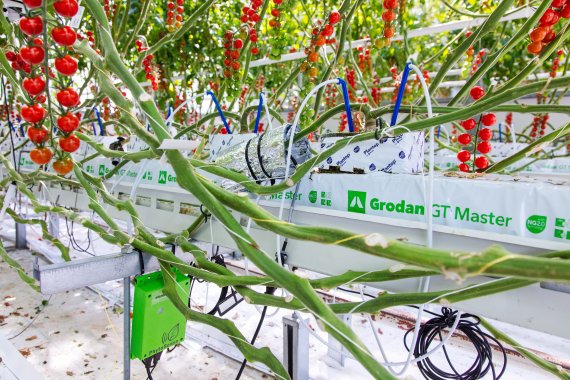‘All AI-teams performed better than the control horticulturists’, Silke Hemming, researcher of Wageningen Plant Research and co-organiser of the challenge states. The winner, Team AuTomatoes, not only got the highest yield but did so using the least water and energy. Their AI strategy was considered the best by the jury.
Cherry tomatoes
Five AI-teams cultivated cherry tomatoes in their own designated greenhouse compartment of WUR Greenhouse Horticulture in Bleijswijk over the last six months. They made their own management decisions remotely, using sensors and the technology available in the greenhouse. Greenhouse staff were available on location to tend to the crops and maintain the sensors and installations.
Level
The level of the artificial intelligence showed a remarkable increase from the first edition, the jury noted on 8 June. All AI-teams achieved a high yield, and the tomatoes were of an excellent flavour and quality. The winner, however, used the available resources much more sparingly and sustainably. Team AuTomatoes consists of researchers, engineers, consultants and students of the TU Delft, Van der Hoeven Horticultural Projects, KeyGene and Hogendoorn Growth Management.
Corona
Safeguarding and analysing data was a big challenge for all the teams. They had to rely entirely on digital images, and, unlike the control horticulturists, were not able to take a stroll through the greenhouse. However, halfway through the challenge, the control group was also no longer able to visit the greenhouse due to the corona measures and were obligated to base their decisions on data, video footage and phone conversations with the chief horticulturist from WUR.

Obstacles
‘This challenge has shown that growing vegetables remotely is indeed possible’, Hemming says. ‘In times of COVID-19, this opens up many possibilities. All decisions can be made autonomously and remotely.’ However, there are also obstacles for an autonomous greenhouse. Objective data is needed on aspects of crop production. Lack of data is often a problem, and interpretation of the data leaves room for improvement. Moreover, further research into how humans and robots collaborate is needed, Hemming states. Only then will there truly be an autonomous greenhouse where the decisions are taken by the computer.
Skilled workers are still needed in the greenhouse to maintain crops and technology. Robots taking over their jobs is still far off.

 Photo: Silke Hemming
Photo: Silke Hemming